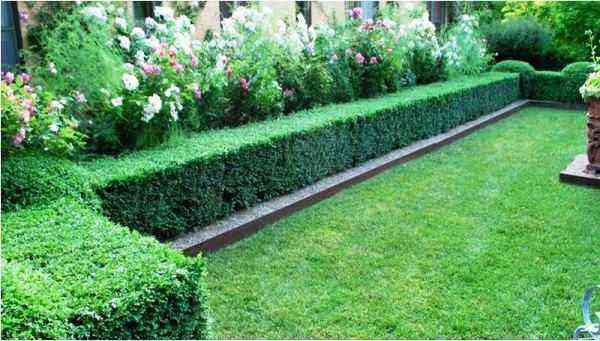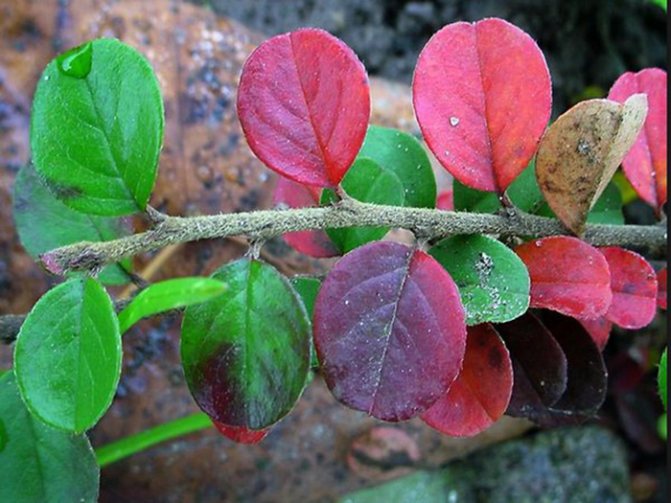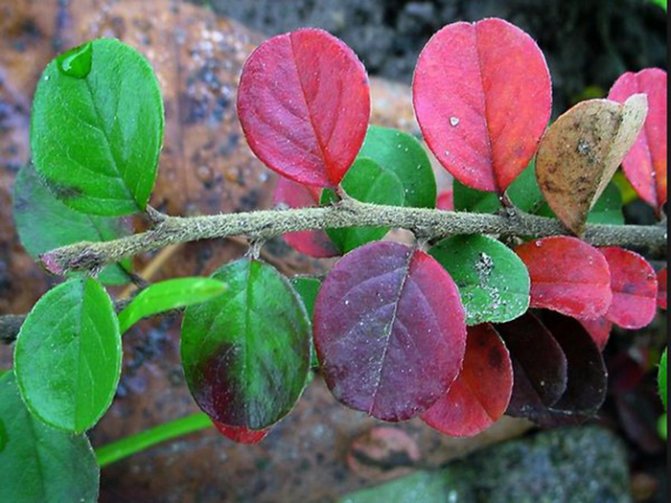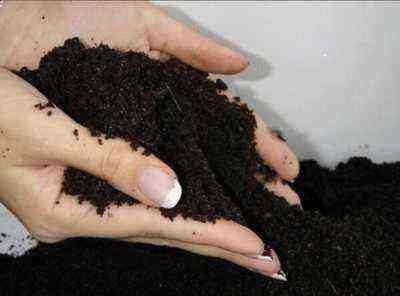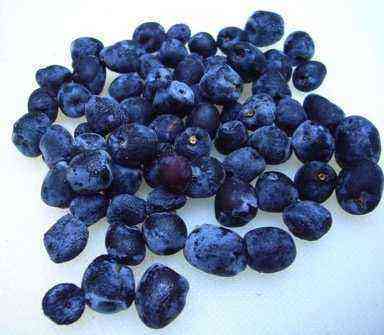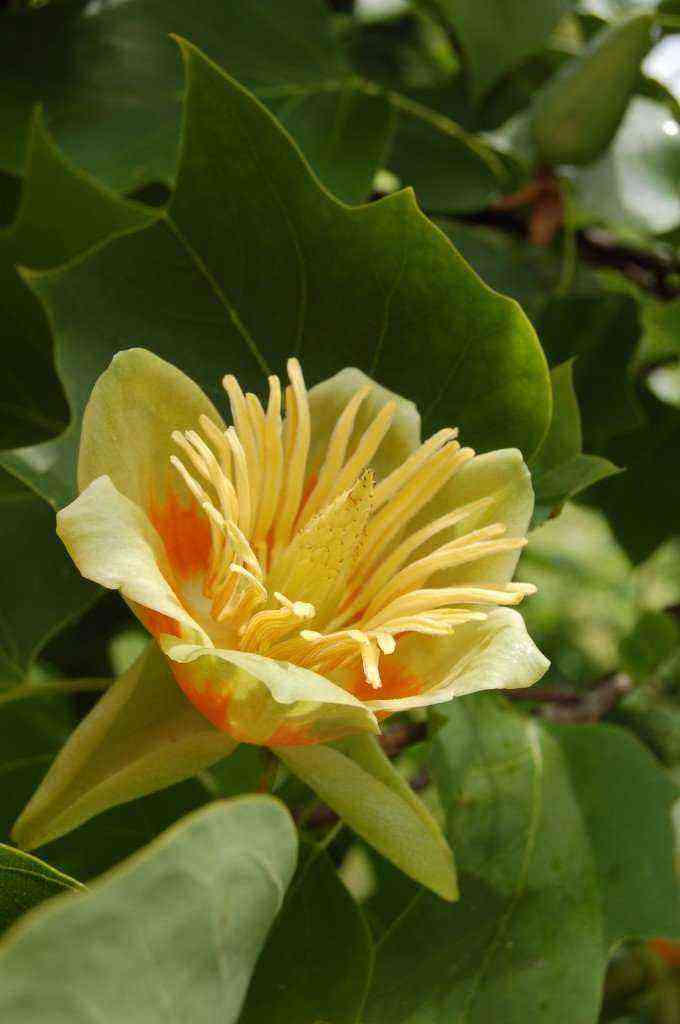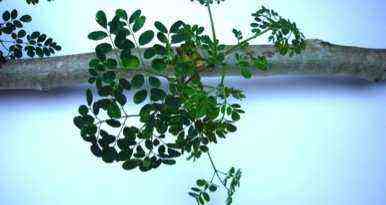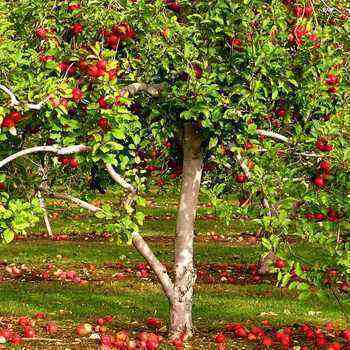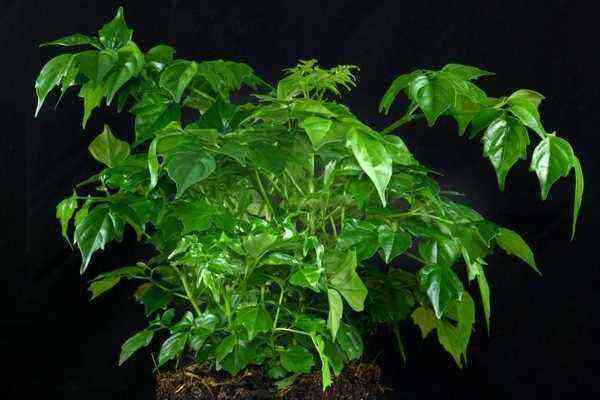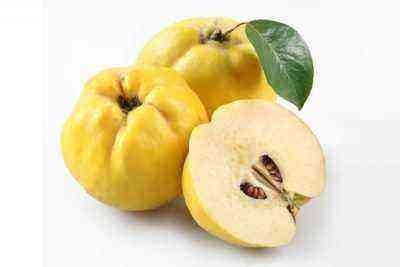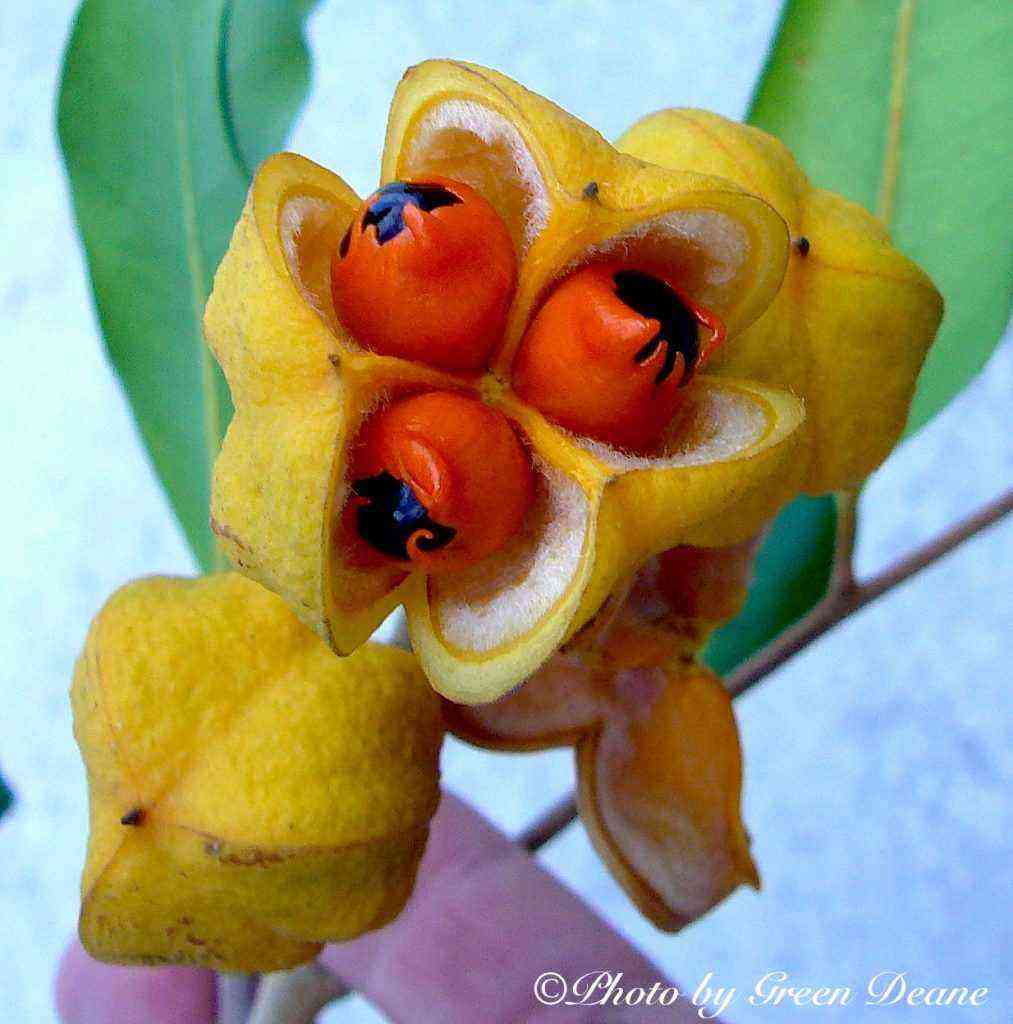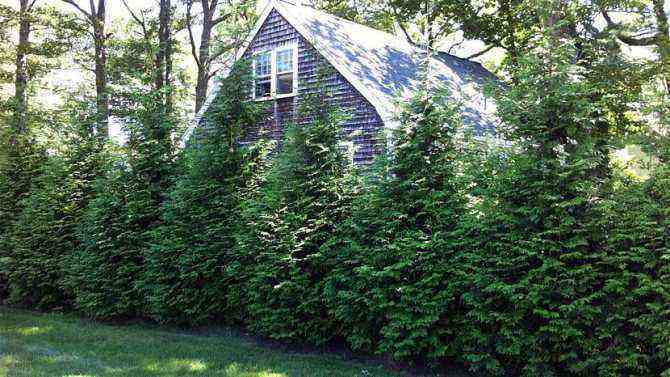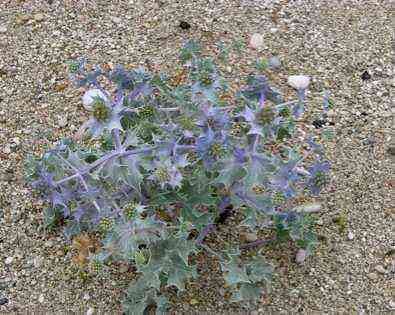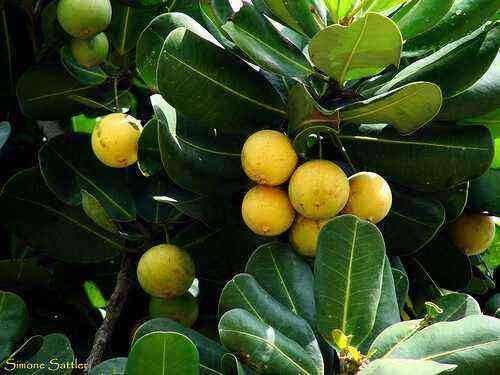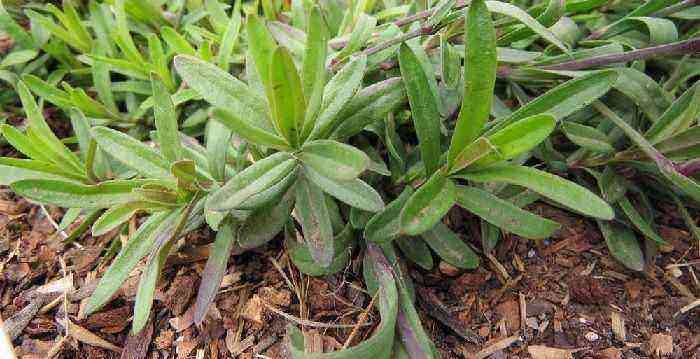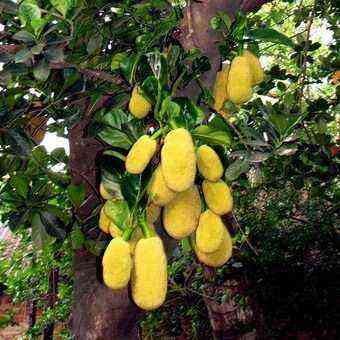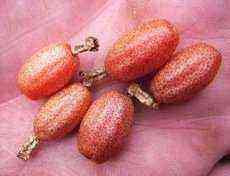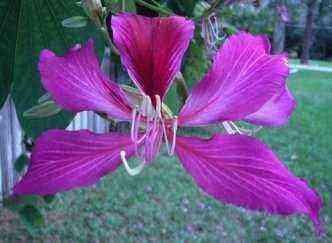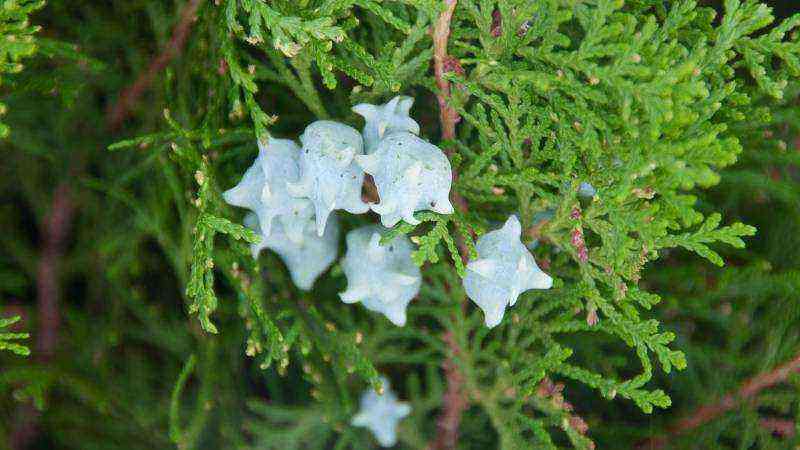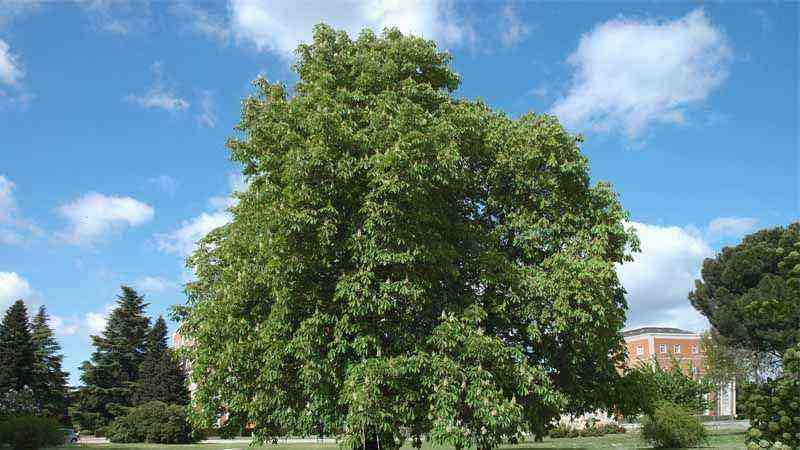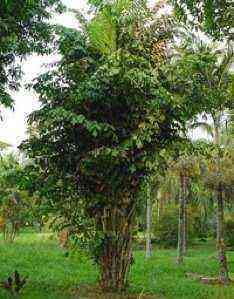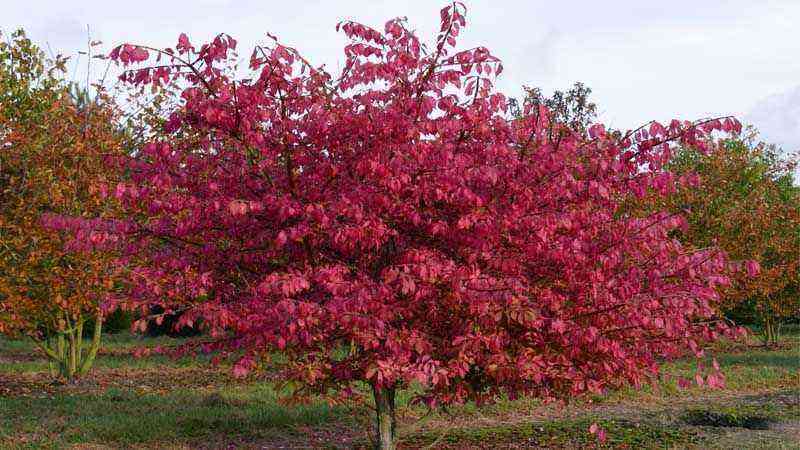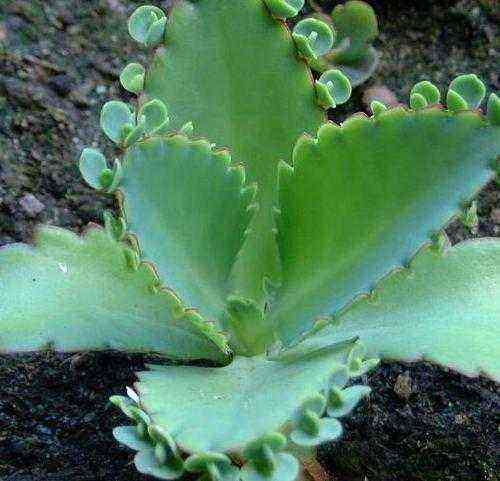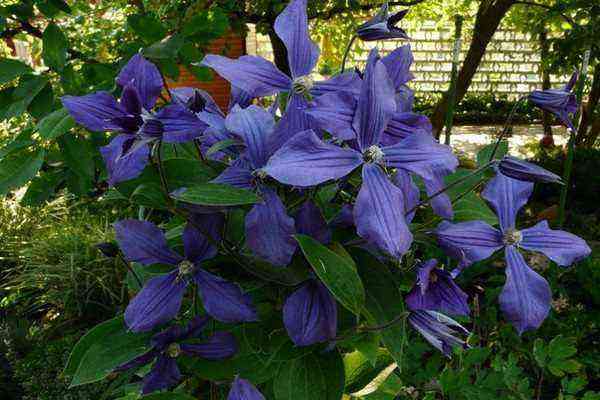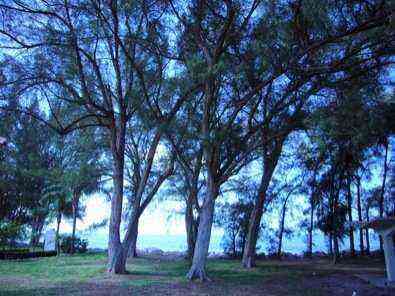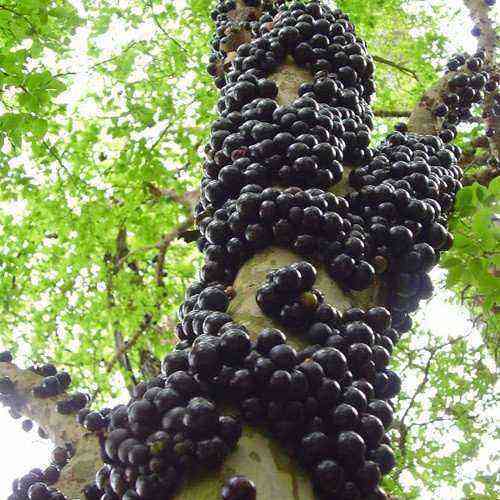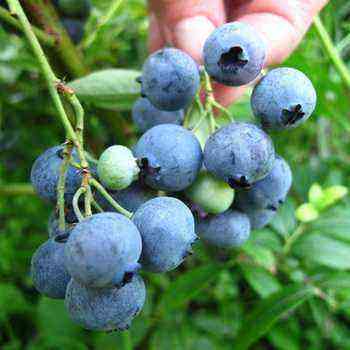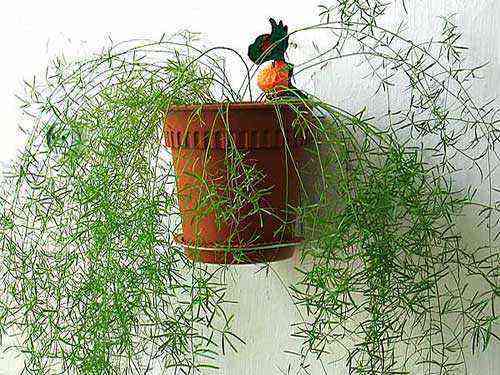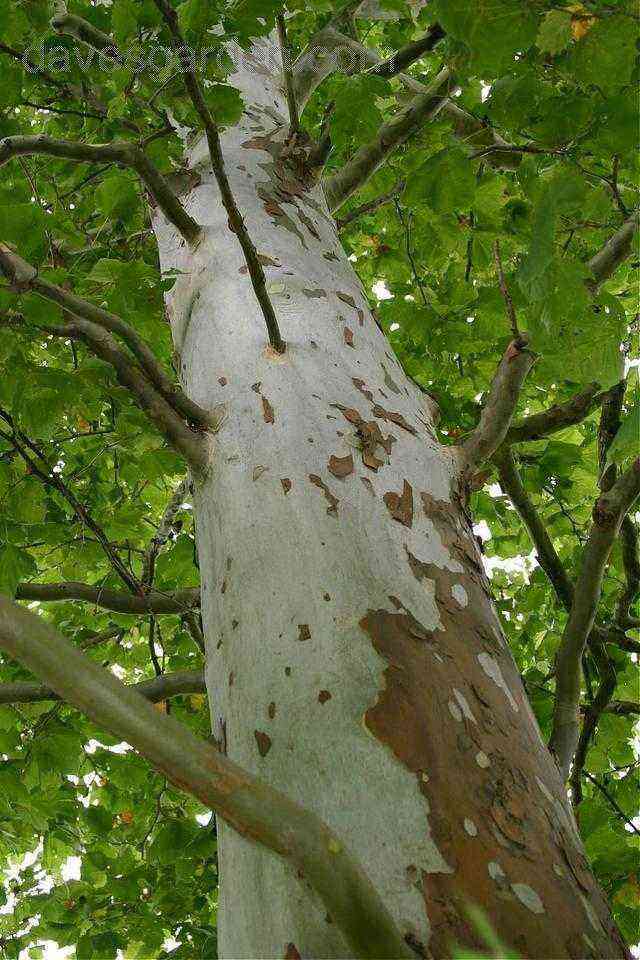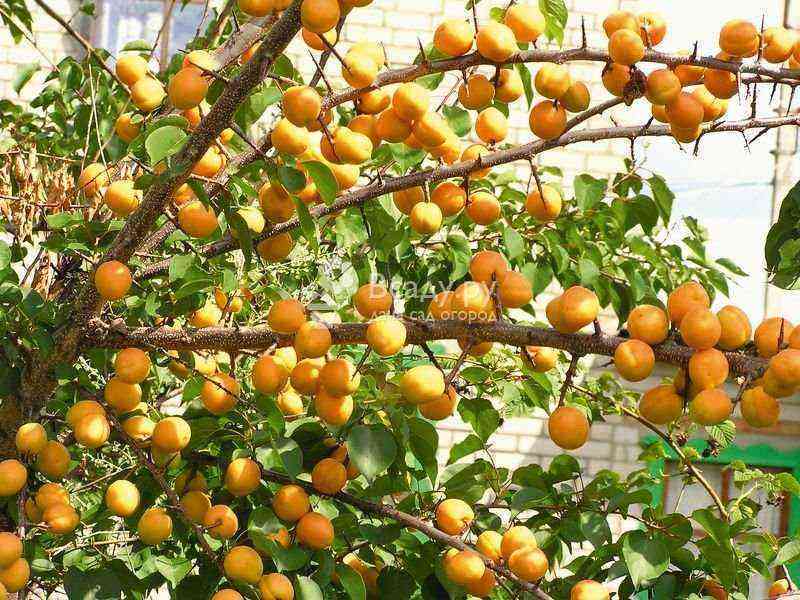Characteristics of a shiny cotoneaster
The brilliant cotoneaster variety (Latin – Cotoneaster lucidus) has thick pointed leaves that turn purple and burgundy in autumn. The size of the cotoneaster does not exceed two meters, and the leaves grow up to five centimeters.
Shiny cotoneaster – hedge photo
The brilliant cotoneaster with the Latin name Cotoneaster lucidus has inflorescences of eight pinkish flowers that appear in early May.
Young shoots are covered with fluff. The fruits of the plant have a glossy surface and a black tint. They stay on the cotoneaster until the onset of winter and create a spectacular contrast against the background of the snow-white cover.
The first fruits appear on such bushes after four years from the moment of planting.
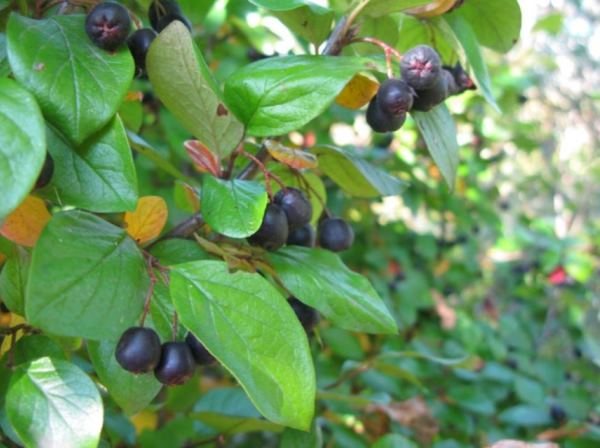
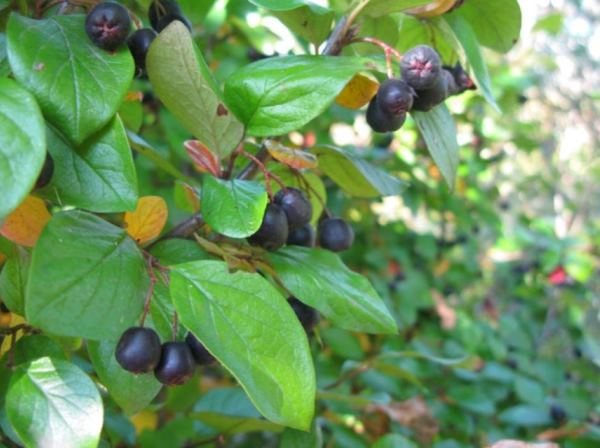
Brilliant cotoneaster: photo and description
The benefits of the cotoneaster fruit are associated with its medicinal properties. They can be used to treat bowel diseases, edema, nervous tension, inflammation of the skin. They play the role of an antiseptic.
Other advantages of this plant follow from the description of the brilliant cotoneaster shrub:
- such bushes calmly react to temperature changes and are unpretentious to the internal structure of the soil on which they grow;
- even without constant care, the cotoneaster will become a charming addition to landscape design;
- brilliant cotoneaster can grow even in drought conditions;
- pests and diseases for such plants are practically uncharacteristic;
- Although the cotoneaster grows best in well-lit areas, you can plant it in the shade.
Knowing the basics of planting and caring for a brilliant cotoneaster will allow you to preserve the beauty of such a hedge for a long time. The only difficulty associated with growing ornamental trees and shrubs of the brilliant cotoneaster relates to their reproduction, but you can master this process, focusing on the recommendations of gardeners.
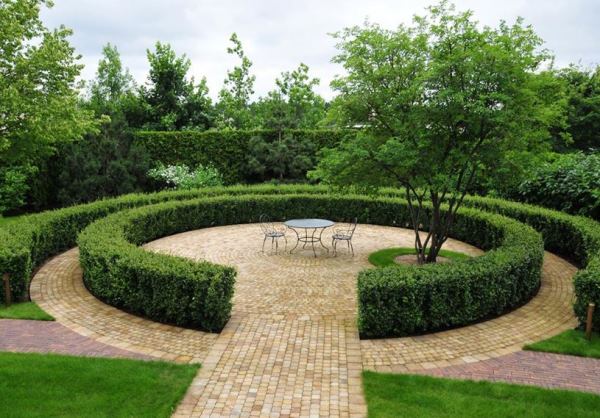
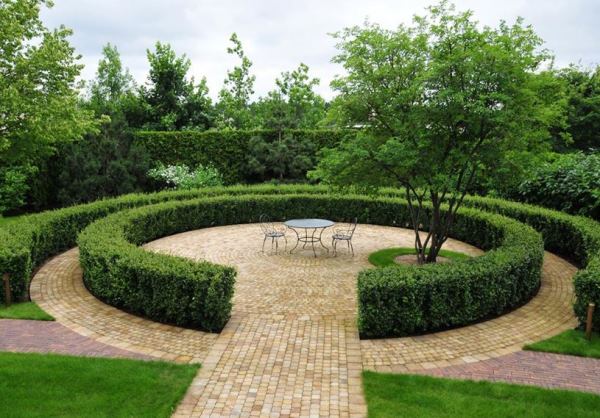
Hedge from a brilliant cotoneaster, photo
Description of the type and characteristics
From the description it is clear that the brilliant cotoneaster belongs to the group of upright deciduous shrubs that grow up to two meters in height. The plant has small dark green leaves with a diameter of 4 centimeters and a characteristic taper at the ends. They have a smooth surface, which is why they enjoy great decorative value. The first true leaves are formed at the beginning of spring, when they are painted in pale green tones.
A distinctive feature of the shrub lies in the ability to change its color. For example, in the autumn, cotoneaster hedges turn purple, and their pink, corymbose inflorescences, consisting of 5-8 flowers, turn the composition into a unique work of greenhouse art. The flowering period falls in May or early June, after which the shrub is covered with small berries. By the way, cotoneaster fruits can retain their attractiveness until the autumn season. As for the flowers, they remain inconspicuous, with the exception of the period when they begin to open at the same time.
Against the background of green leaves, pink buds look very interesting, which increases the decorative value of the bush. Almost every flower is a place of fruit formation. In the early stages of ripening, they acquire a green color, but soon change it and become deep red. Full ripening of berries accompanied by the acquisition of black berries. Ripe fruits are edible.
In the wild, the shrub leads a solitary lifestyle, however, in some regions, whole thickened plantings of cotoneaster calmly grow. If you intend to plant an ornamental plant in your garden, then for such an event you can choose both open spaces with good exposure to light and shaded areas.
Advantages and disadvantages of a cotoneaster
Before you start planting a bush, carefully study not only the pros of the upcoming lesson, but also the cons. Of the advantages of culture, the following should be highlighted:
- frost and drought tolerance, which allows them to be freely grown in mid-latitudes and harsh climatic conditions;
- lack of whimsical choice of habitat and high decorative value. By the way, the bush feels great in urban conditions, where there is excessive air pollution with soot, dust or exhaust gases;
- strong immunity, which allows you to fight a variety of diseases;
- the ability to grow in any soil;
Such advantages make it possible to massively plant seedlings in parks and even on city streets. However, in addition to the pros, the cotoneaster also has disadvantages, including:
- the need to carry out regular sanitary and formative pruning;
- some difficulties in breeding on the site;
Whatever one may say, there are much more advantages, therefore the questions: “How to grow a shrub at home: hedges, photos, breeding features and care”, disturb every gardener who wants to grow a plant for landscape design.
Sowing cotoneaster seeds

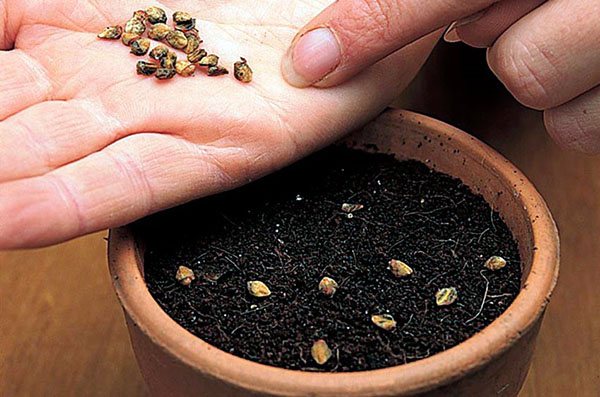
This beautiful shrub bears fruit abundantly with red bead berries, in which the seeds are hidden. Cotoneaster can be propagated by sowing them, but this is not the most productive method. The seeds germinate very poorly, a significant part does not germinate, and the sprouts themselves slowly grow in growth. To get a sapling of sufficient size, you will have to be patient and wait 3-4 years. Cotoneaster propagation by seeds is more often practiced by breeders engaged in obtaining new varieties of plants.
If difficulties are not scary and there is a desire to try this method, then you need to follow these tips:
- First, the berries wither a little. After that, the pulp is much easier to separate from the seeds.
- The refined grains are washed to remove it completely.
- The seeds are rejected in order to separate all unpromising specimens at this stage. This is not difficult to do, it is enough to fill the planting material with water and leave it for a while. Seeds that float on the surface will not sprout, they are immediately thrown away.
- The grains need to be stratified. For two months they are kept at a temperature of 30 ° C, and then gradually it is reduced to -5 ° C.
- The cotoneaster seeds prepared in this way are sown next fall by about 3-5 cm in depth.
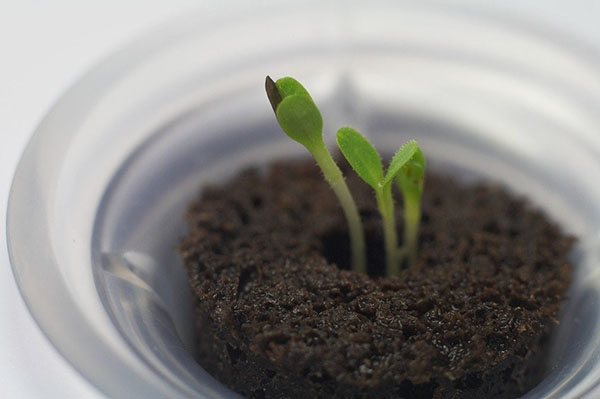
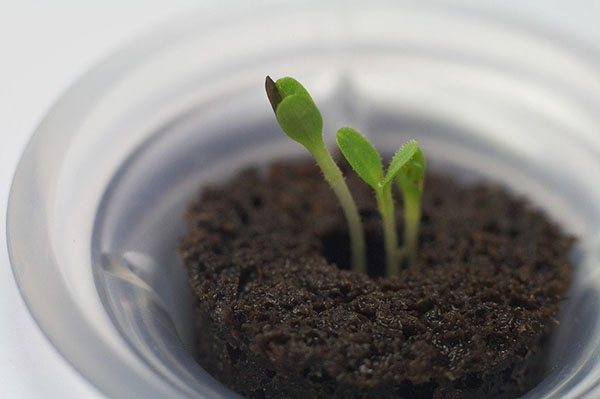
The seedlings should be looked after until spring, then planted in open ground. The cotoneaster tolerates shaded areas well. With sufficient lighting, the decorative features of the plant are fully manifested. Therefore, if possible, it is preferable to plant the cotoneaster in an open area.
The hole for planting the plant should be 50x50x50 cm in size. Drainage at the bottom 20 cm high is required so that the roots do not rot. A mixture of peat, humus and sand (all ingredients in 1 volume) and turf (2 volumes) is poured over the drainage. To neutralize the reaction of the soil, you need to mix 250 g of lime.
When planting, it is important to leave enough space between the plants: 50 cm is enough for small varieties, large varieties require about 2 meters.
Other methods of reproduction of the brilliant cotoneaster
Many ornamental plants are propagated by dividing the bush. The brilliant cotoneaster is no exception. It is enough to dig out the bush and carefully divide it into several parts. Delenki are immediately seated in the desired places. When the mother shrub is large enough, many individual plants can be separated from it. The procedure is carried out both in the fall and in the spring. The plant takes root very quickly.
The horizontal cotoneaster can also be propagated by seed. Gardeners do not use it often, as the process is laborious and time-consuming.
Seed preparation for planting:
- First, you need to collect berries from the bush, they are dried a little, so that the pulp is easier to separate.
- The seeds are cleaned of pulp residues and washed well.
- The seed is immersed in a container of water. Natural selection begins, bad seeds, not viable, will rise to the surface of the water, good ones will fall to the bottom. Floating seeds should be discarded.
- Good seeds must be stratified. This period takes a long time, about a year.
- Sprouted seeds are planted in open ground after a year.
Seed reproduction is quite troublesome, therefore it is rarely used, and most often for the purpose of breeding a new variety.
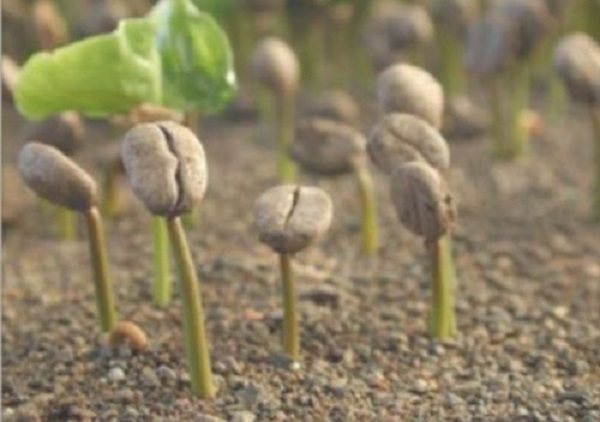
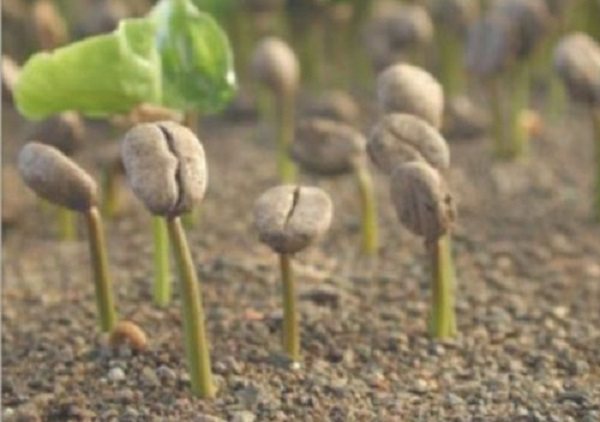
Hedge placement options
When planning the creation of a hedge from a cotoneaster, you should consider in what conditions it will grow. We recommend planting such bushes in semi-shaded areas along the fences. So the cotoneaster leaves will not undergo burnout processes and will attract attention with their natural brilliance.
Attention! You do not need to water the plant constantly. Make sure that the water does not stagnate in this area. It will be better if you drain it.
As for the soil, its choice depends on how important the appearance of the hedge is to you. Despite the fact that the cotoneaster can grow in different conditions, leaves with an orange and green tint with the onset of autumn are possible only if they grow on sandy soil, since the clay type soil lacks trace elements that contribute to the color change of the plant.
Cotoneaster brilliant in landscape design, photo
Cotoneaster brilliant in landscape design: photo
If you intend to seriously change the appearance of landscape design near a private house or summer cottage, the design option for green fences based on a shiny cotoneaster may be the most suitable. To make sure that these compositions look very attractive, just look at the photo.
Taking care of such a beautiful plant as a cotoneaster is quite simple. Nevertheless, in order for a green fence from this culture to be truly stylish, beautiful and attractive, a number of basic rules and requirements should be taken into account.
Almost all types of cultivated cotoneaster are famous for their excellent drought resistance, therefore, even with severe drought, they do not need additional watering. However, for normal growth, adult specimens are watered several times a season, when about eight liters of water are poured under each bush. It is known that shrubs tolerate underfilling better than excess moisture in the soil. In the latter case, the probability appears the development of rot and fungal microorganisms.
During the hot season, the cotoneaster can be freshened with a jet of water, which will knock off all dust and other impurities on the leaves.
This procedure will be especially relevant in the case of using a hedge as a fence. A properly designed hedge is an indispensable decoration for any landscape design.
Therefore, if you want to transform your site, do not give up seasonal formative pruning and watch the shrub at different stages of its life and development. Believe me, all the efforts spent will be justified.
The casserole is brilliant
Horizontal and creeping cotoneaster: propagation by layering
Among the cotoneaster there are ground cover species. Their shoots hang 10-20 cm above the edge of the earth or spread along it. Consequently, their branches are close to the edge of the soil, and in the creeper they come into contact with it. In the places of these contacts, roots are formed over time. This can happen spontaneously.

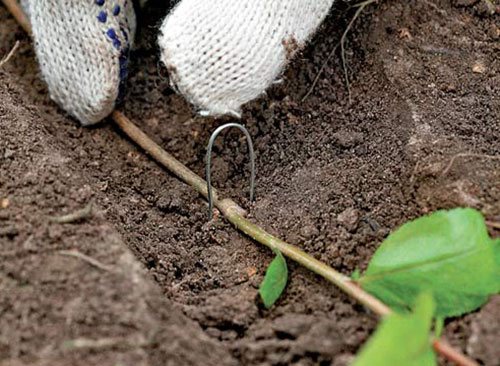
To get a certain number of seedlings of these plants, you can select young shoots and pin them to the ground with metal staples. From above, it is advisable to sprinkle this place with humus.
In spring, with a sharp shovel, they cut a branch at the base of an adult bush and carefully dig out the rooting site. The resulting seedling is transferred to the designated place and planted in the usual way.
This method is one of the most effective, since the young seedling feeds on the mother bush, receives moisture and nutrients through the powerful root system of an adult plant. If you do not touch the plant and let it grow on its own, then over time it will braid a significant piece of land and turn into a living carpet no worse than a grass lawn.
Reproduction by layers
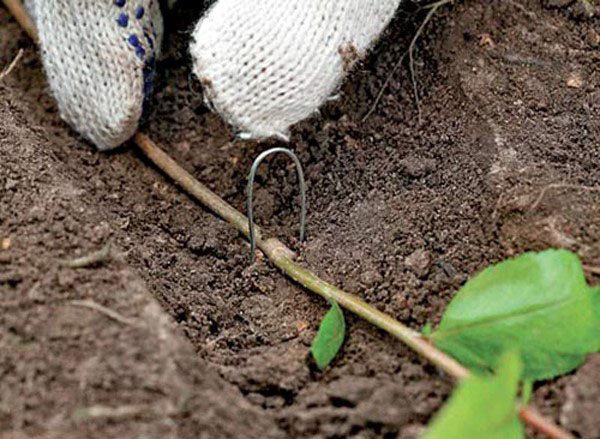

This breeding method is suitable for a ground cover cotoneaster. Branches close to the surface of the ground can take root on their own and give a new shrub. To speed up this process, young shoots are simply pressed to the ground with staples, lightly sprinkling with humus. By the spring they will give good roots. In April, each specimen can be separated from the mother plant and planted separately.
This is a very productive way with 100% results. After all, the branches while growing their roots are constantly fed from a strong mother bush.
Saplings, when propagated by layering, root well. They are quite strong and have excellent immunity to various diseases.
Regardless of the chosen method of reproduction of the shrub, do not forget about the correct preparation for planting new specimens and good care for them. Young plants are sensitive to frost and require shelter for wintering.
Video about planting a cotoneaster
The cotoneaster can be not only a fruit, but also an ornamental crop. Red fruits against a background of lush green foliage will favorably set off the site if you plant a shrub as a hedge or a central figure in combination with other plants.
Caring for the cotoneaster
Caring for a cotoneaster is extremely simple. And if in the first year or two after planting it must be periodically watered and weed out, then after the seedling takes root well and grows, you can not pay attention to it at all.
Watering, feeding
An established cotoneaster bush requires watering only in case of prolonged drought. However, even without this, it most likely will not die, but it will grow poorly and bloom poorly. Therefore, if you want to squeeze all possible splendor out of the bush, it is periodically watered and fed. After watering, it is necessary to loosen the soil if it is not contained under a layer of mulch.
If it is possible to water with a hose, you can do it not at the root, but along the crown: a lot of dust and debris always gets stuck in dense thickets, at the same time they carry out sanitary cleaning of the bush in this way.
When watering, it is important to observe the measure: it is better to keep this plant on a semi-dry ration than in swampy soil. In the event of a drought, an adult bush can take up to 80 liters of water, but next time watering will not be required soon.
In fertilizing, the usual rule applies: in the spring the plant needs nitrogen most of all, in the summer in potassium and phosphorus, in the fall in potassium. Autumn feeding is usually done with ash (up to half a liter per square meter), early spring – urea (a couple of handfuls under an adult bush), and at the beginning of flowering, add superphosphate and potassium sulfate (30-40 g / m2). Mulching the soil before winter with a layer of humus of 3-4 cm completes the feeding cycle in the season. After mulching, some thermophilic cotoneaster species in cold regions are slightly sheltered for the winter, bending down the branches and throwing coniferous spruce branches over them.
Trimming and shaping
The cotoneaster tolerates pruning easily, does not get sick from it, and often even feels better. The formation of the bush, giving it the desired shape is best done in the spring, before the buds open. Do not shorten the shoots left by more than a third at a time. Pruning stimulates the cotoneaster to shoot and branch. Prismatic, cone-shaped bushes are cut from the bushes, they are formed in the form of a ball, a cube and even various living figures. True, it is better for an inexperienced gardener not to get carried away with these actions without quality training.
Designers make any shapes from cotoneaster bushes
Sanitary pruning is carried out at any time and does not require special knowledge: everything that is broken, dried, damaged by pests and frozen must be cut out. Over the years, the oldest shoots are cut out, rejuvenating the bushes, as well as those that thicken the crown too much.
Protection against diseases and pests
The cotoneaster is extremely rare. Only in conditions of excessive humidity and unfavorable weather do fungal diseases sometimes occur, most often fusarium. The affected fragments must be cut out, and the bush should be sprayed with Bordeaux liquid (in spring and autumn, a 3% liquid is used, during the growing season, on green leaves, – 1%). If the disease has gone far, you can try to transplant the young bushes to a new place, cutting them off, and then disinfect the soil after them with potassium permanganate or copper sulfate. The presence of a drainage layer in the planting pit and periodic loosening of the soil are a good prevention of fungal diseases.
With fusarium, whole shoots become stained and wither
Pests are found on the cotoneaster more often. It can be apple aphid, scale insect, various mites. At the initial stage, with a small number of pests, they try to cope with folk remedies. Decoctions of yarrow, tobacco dust, marigolds, or infusion of ash and soap can help. After a few days, the treatment will need to be repeated.
If such measures do not help, and the number of pests is growing, they resort to insecticides. Since the cotoneaster is not used for food, chemical preparations can be used at any time. It is only important to take precautions: as a rule, permitted insecticides belong to the 2nd or 3rd hazard classes, and spraying should be carried out in protective clothing and a respirator. Any drugs can help against insects on the cotoneaster, but to be sure, they immediately use Aktara or Actellik.
Vaccination is a simple but effective way to propagate a cotoneaster
The grafting method is used for varietal types of cotoneaster. A well-developed young shoot of a wild-growing cotoneaster is taken as a stock. The budding procedure is performed in the morning, when the plant is saturated with moisture, the dates are late August – early September. The scheme is as follows: a cut rootstock bud with a petiole is inserted into a T-shaped incision on the bark of the scion. In the spring, before the beginning of the growing season, the upper part of the rootstock above the bud is cut off. The bud will give life to a young shoot, which by autumn can grow up to one and a half meters.
Reproduction of the brilliant cotoneaster
How to propagate a brilliant cotoneaster? There are two options for how the cotoneaster reproduces – by cuttings and by seeds.
If you choose to propagate a shiny cotoneaster with seeds, keep in mind that only half of the seeds involved will sprout. That is why long-term stratification should be carried out throughout the year before starting work. Collect the seeds in October in a metal container – and store outside or in the refrigerator. With the onset of the next autumn season, they can be used for plant propagation.
Attention! If you want to speed up this process, soak the seeds in sulfuric acid for about 20 minutes. Then they can be used in a month.
Immerse the seeds in warm water before planting. Those seeds that float are unsuitable for planting. Sow the soil by placing the seeds about 4 centimeters deep. The distance between them must be at least 15 centimeters.
The germination process of seeds can be delayed. Even if you follow all the recommendations of experts, the yield can be about 10 percent of the total amount of seeds. As for the speed of germination and growth, some shoots will appear only after a year.
How fast does a cotoneaster grow? In the first year, the plant will grow by about 30 centimeters, and after another year, a crown will form at the cotoneaster. For such bushes to start blooming, wait 4 years.

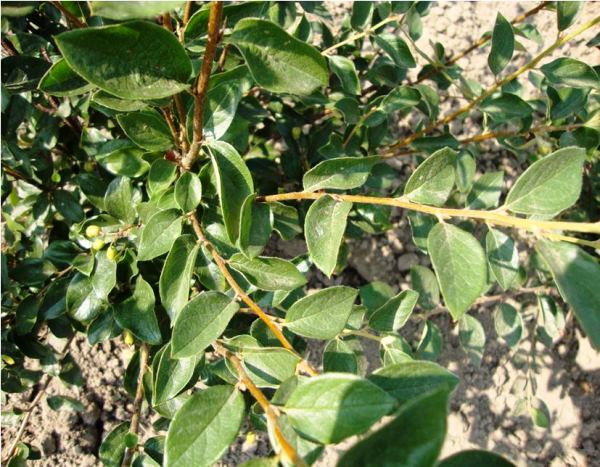
Brilliant cotoneaster, hedge: photo, growth rate
Now let’s figure out how to propagate a shiny cotoneaster with cuttings. For grafting cotoneaster, you can use both green and lignified cuttings. In the first case, the reproduction of the cotoneaster takes place in July. Cuttings should have dimensions up to 15 centimeters and include at least two internodes.
How to cut a cotoneaster? First, place them in a growth-promoting solution for a few hours, and then plant them in the prepared soil in separate boxes. Form the soil on the basis of the same ratio of sod land, humus and sand. Weed well the soil in which the cotoneaster will grow.
Arrange the cuttings at a 45-degree angle – and place 5 cm into the ground. Cover with glass jars or wrap in plastic (you will have to constantly remove it to ventilate and water the plants).
With the propagation of a cotoneaster shining with cuttings, the root system will grow by the autumn season. Then you can move the plants to the area where the hedge is being formed. With the onset of cold weather, cover them with needles or dry foliage.
As for lingering cuttings, they should be cut off when cold weather sets in – and stored in a cool place in the sand. For spring, cut them into 20-centimeter pieces with three or more buds each. The further process will be the same as described above.
Features of planting cotoneaster
Almost all cultivated species respond normally to transplants and freely take root in new conditions. However, when propagated with it is better to wait for the seedlings in spring (by the way, the shrub takes root freely even in early spring, when the snow finally melts and the night frosts stop). In most cases, planting is carried out in late autumn.
When choosing places for the upcoming procedure, preference should be given to well-lit ones, although in partial shade the plant develops quite normally. As for protection from wind and drafts, it should be mandatory. It is also desirable that a deep groundwater table is present in the selected location. The planting scheme includes planting seedlings at a distance of 1,5-2 meters from each other (A more accurate distance is determined by the future crown diameter). It is better to bury the seedlings 70 centimeters into the soil..
The shrub does not show particular finickyness in the choice of the composition of the substrate. Still, for further growth and development to be truly successful, you need to prepare the following soil composition: 2 parts of sod land is mixed with 1 part of peat or compost and 2 parts of coarse sand. A small amount of lime can be added to the resulting composition at the rate of 300 grams per square meter of area.
Landing technology and rules
First you need to pay attention to the fact that planting a cotoneaster at home cannot be called too easy a procedure. In most cases, the crop is grown by seed, although gardeners are often interested in the topic of the vegetative method, typing in the search engine the phrase: “brilliant cotoneaster: propagation by cuttings, grafts and layering.”
If you intend to plant a hedge cotoneaster from seed, do not despair if the germination rate hardly reaches 50%, although the next year the seeds remaining in the ground may sprout. Such indicators can be improved with the help of careful stratification of the planting material throughout the year. After successfully collecting seeds, they need to be placed in a metal container and moved to a refrigerator or outdoors. Planting can only be carried out next year, waiting for autumn.
Immediately before planting in a suitable substrate, the seed must be treated with warm water. If, after contact with the liquid, some seeds float, they can be collected and discarded, because they are dead.
As for the remaining seeds, such planting material is buried in the ground to a depth of 4 centimeters and sprinkled with a small layer of earth. It is better to immediately observe the optimal distance between seedlings, which should be at least 15 centimeters.
You should not wait for quick shoots, because germination of young shoots is a long and complex process. Even if all the established requirements are met exactly as indicated, the germination percentage often reaches only 20-30 percent. For the first year, the height planted specimens reaches 30 centimeters. Only a year later, the formation of the crown begins. The cotoneaster blooms in 4 years.
Due to poor germination, it is quite difficult to find a brilliant cotoneaster in the wild. You can increase the success of the upcoming action with dense planting of seeds. As they grow older, the bushes are seated separately.
Forming a hedge from a brilliant cotoneaster
A hedge from a brilliant cotoneaster is often planted by gardeners. A positive feature of some breeds of this plant is its unpretentiousness to the harsh climate and a decent appearance. In the northern regions of the country, a hedge made from a brilliant cotoneaster is popular, the homeland of which is considered to be Eastern Siberia.
This plant can be planted as separate bushes, or it can be combined in groups. The leaves of the brilliant cotoneaster have a dark spherical color and are up to 5 centimeters long. Its decorative qualities are determined by velvety leaves with a silk sheen. At the end of spring, the plant begins to bloom and become covered with pink flowers. This phenomenon lasts for about a month, from May to June.

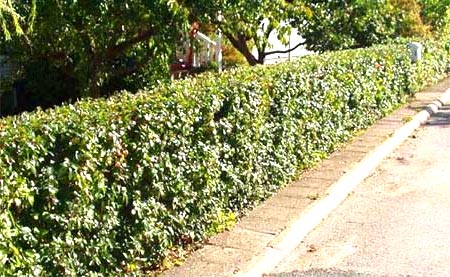
During flowering, the dark leaves of the lustrous cotoneaster contrast extraordinarily with the pink flowers, making it remarkable for garden decoration.
Back to the table of contents
Brilliant cotoneaster: characteristics and description of the variety
A representative of the Pink family, the shrub cotoneaster, inhabited the rocky slopes and river banks of China. Now it serves as a wonderful decoration for our gardens and is used in landscape design, since the climate of the middle zone is “to the liking” of the plant.
Among a kind of cotoneaster brilliant (Cotoneaster lucidus) the most widespread and popular. Decorativeness and unpretentiousness made him an inhabitant of parks, squares, gardens, summer cottages. The shrub has settled in central Russia and Siberia. The most common in Buryatia and the Irkutsk region. Garden culture has the following characteristics:
- grows 2 meters;
- form – erect;
- throws off foliage for the winter;
- leaf blade up to 5 cm;
- the leaves are elliptical and pointed to the edge;
- forms corymbose inflorescences with 5-12 flowers of a pale pink hue;
- it is distinguished by abundant flowering, which occurs in May-June;
- in the 4th year of life, forms the first small spherical fruits.
Foliage gives decorativeness to the cotoneaster. In summer, the leaf from above is painted in rich green tones, and the lower part of it is distinguished by a yellow palette. Because of this, he “plays” in the sun, creating a different color scheme.
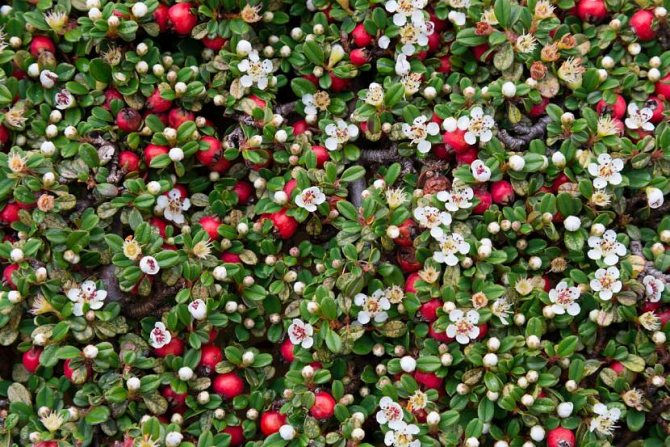
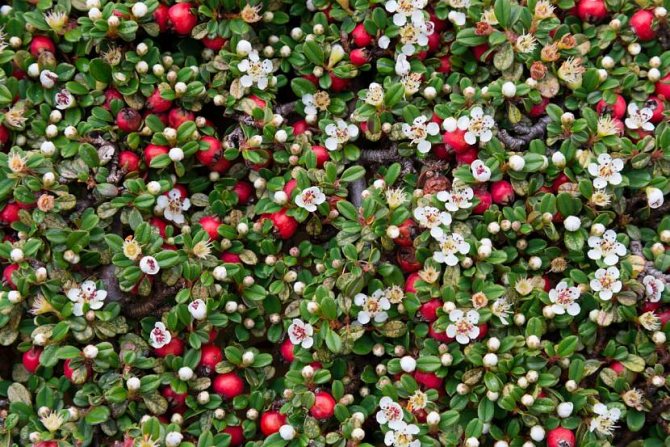
It looks like a blooming cotoneaster Source farmer-online.com
During flowering, cover the bush with pink inflorescences, which gives the impression of a cloud, painted with gentle tones of watercolor. In autumn, the foliage changes color from green to yellow, then orange, gradually becoming crimson. Black fruits with red foliage form an unusual combination. The brilliant cotoneaster lives up to its name: the berries and leaves have a glossy sheen, creating an even brighter picture.
On a note! The brilliant cotoneaster is distinguished by its slow growth. This allows you to give it the desired shape without much hassle: due to restrained growth, the shape remains for a long time. The shrub has an average life span of 50 years.
Attractiveness for gardeners
Before buying seedlings, the gardener must weigh the positive and negative aspects of the new gardener. Get acquainted with the care, think about the layout. Consider that the cotoneaster is a perennial shrub that will delight you with bright colors for up to 50 years.
Cotoneaster: hedges are rich in color in autumn and colorful berries in winter. But with the complexity of care, decorative culture would not be so in demand. The cotoneaster is loved by gardeners for its unpretentiousness:
- grows on any soil;
- feels good on rocky soils and slopes;
- stoically refers to temperature changes;
- not picky about care;
- resistant to dry conditions;
- tolerates a haircut well;
- the lower part is not exposed, creating a coherent green cube;
- long-liver;
- well tolerates gas pollution and smoke;
- rarely damaged by pests and diseases;
- withstands partial shade well.
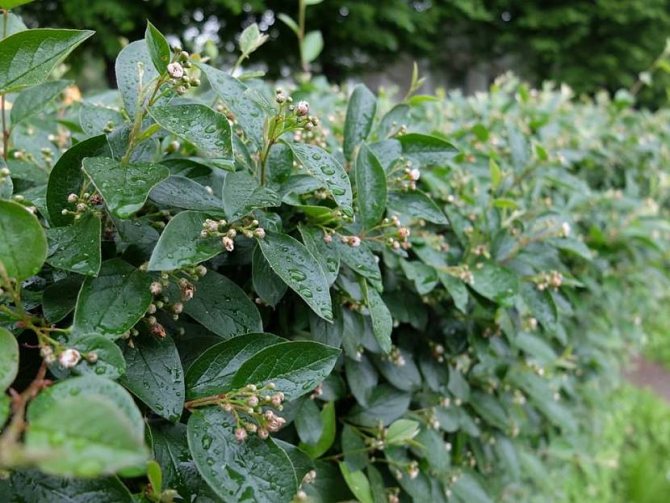

Unpretentiousness allows the shrub to maintain decorativeness in any climatic conditions Source pinimg.com
Of the shortcomings, it does not grow more than 2 m, which is associated with the biological characteristics of the plant. Therefore, curbs of medium and low height are created from the bush. A regular haircut is also important, otherwise, instead of a hedge, you will end up with a messy cluster of bushes.
On a note! The main difficulty that a gardener can face is breeding problems. And if there is no time to master this technique, then cotoneaster seedlings are purchased in specialized nurseries.
How to trim a hedge
With the rapid growth of cotoneaster bushes, timely pruning should be provided to maintain the correct shape of the hedge. Decide immediately when to cut the cotoneaster. Usually this process is done after the start of rapid growth.
A closed-rooted cotoneaster can be trimmed immediately after planting: this will allow it to become even more luxuriant over time.

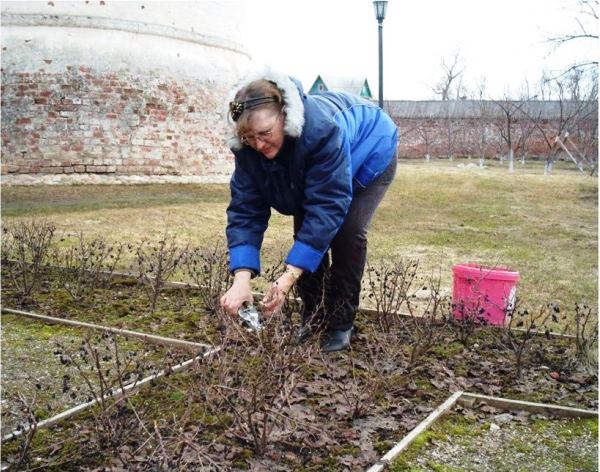
Tip: when to cut the cotoneaster also depends on the season. It is best to do this in the spring before the buds appear.
Follow these guidelines for pruning a shiny cotoneaster:
- young branches are allowed to be cut only by a third of their size;
- a newly planted cotoneaster can weaken if pruned during the winter season;
- such plants should be trimmed twice or three times during the season;
- make the top of the cotoneaster about ten to fifteen centimeters narrower than the lower part, so that it has a trapezoidal shape. So the lower levels of the plant will grow better, since they will not be too shaded;
- Increase the cutting height by about five to seven centimeters annually until the plant reaches the height you need for your fence.
The best way is to trim a shiny cotoneaster with a ball. This is done using special frame templates that can be made with your own hands on the basis of wooden beams and a stretched rope. Use a hedge trimmer or trellis shears for pruning.

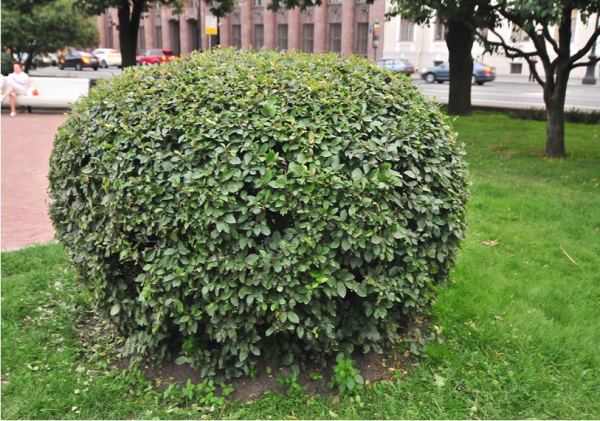
A row of tall columns can be made from this plant. Place two two-meter supports in the center of the column – and braid side branches around these poles. Use a garden hose to connect the poles to keep the metal out of contact with the bushes.
Even if you make a mistake when cutting, the branches of the cotoneaster will grow back – and you can continue the experiment. As a last resort, contact a specialist who will do this work accurately and quickly.
How to propagate a cotoneaster by cuttings and seeds? Plant care
Cotoneaster thickets have recently been indispensable in the organization of hedges, for the design of rock gardens and ornamental plantings. It is easy to form plantings of various shapes from the cotoneaster, and it is just as easy to transplant and propagate – propagation of the cotoneaster by cuttings is especially available. Moreover, these plants do not have thorns and are not poisonous. Therefore, they are not dangerous in planting. This makes it now the most popular in columbariums and plantings, arousing genuine interest among flower growers. But everything about him is better in order.
Cotoneaster brilliant planting care and reproduction photo video
Today it is very fashionable to organize gardens so that in the end they turn out to be environmentally friendly and do not require huge maintenance. This fact is explained by the fact that people try to turn such gardens into a natural and pleasant resting place. At the same time, the design should be as close to nature as possible. Therefore, a living collection of plants is an integral part of modern landscape design. Now the place of bright summer flowers is taken by deciduous and coniferous shrubs. Among them, the brilliant cotoneaster is especially popular in landscape design.
Cotoneaster brilliant in design
In this article, you can get acquainted in detail with the diversity of this plant. Recommendations for breeding bushes on your site will also be indicated. You will learn how the reproduction takes place, as well as what kind of care it needs. You can also find in this article a description of the most popular types of this shrub in design.
Features of caring for a hedge, how to cut it
Care for the cotoneaster during the season is minimal:
- Watering. If it rains at least once a week, the plant will get by with natural precipitation. In extreme heat and drought, the bushes are watered every 3-5 days (12-15 liters per plant). Loosening is desirable after watering. It is useful to pour over them once every 2-3 weeks from a watering can, a hose with a spray, washing away dust and dirt.

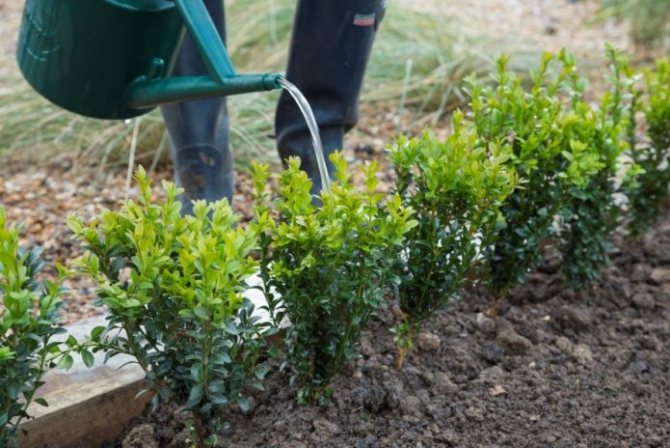
Shiny cotoneaster is recommended to be watered from time to time, washing away dust and other contaminants
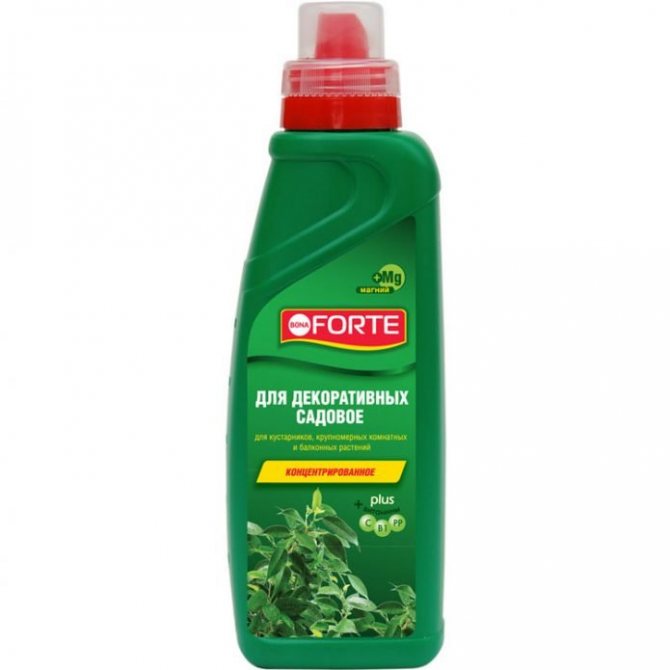
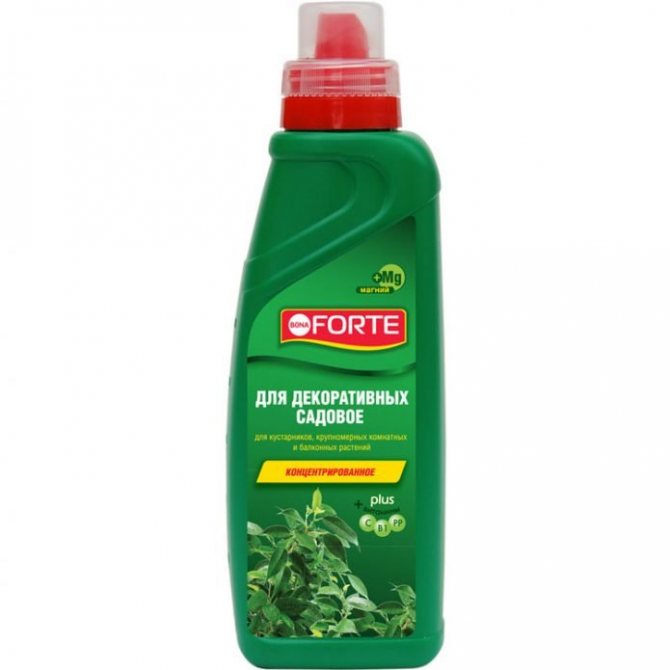
In principle, a brilliant cotoneaster can do without fertilizers at all, but it’s better to spend a little time and feed the bushes.
Video: tips for caring for a shiny cotoneaster
The brilliant cotoneaster is prone to infection by fungal diseases, especially if rainy, cool weather contributes to this. For prevention, the bushes and the soil under them in early spring and late autumn are sprayed with a solution of any fungicide (copper sulfate, Bordeaux liquid, Skor, Oksikhom, Strobi). Having found characteristic symptoms, they use them. Diseases typical of the plant:
- fusarium (roots rot, rot gradually spreads to the aerial part, manifesting itself in the form of “wet” dark spots);
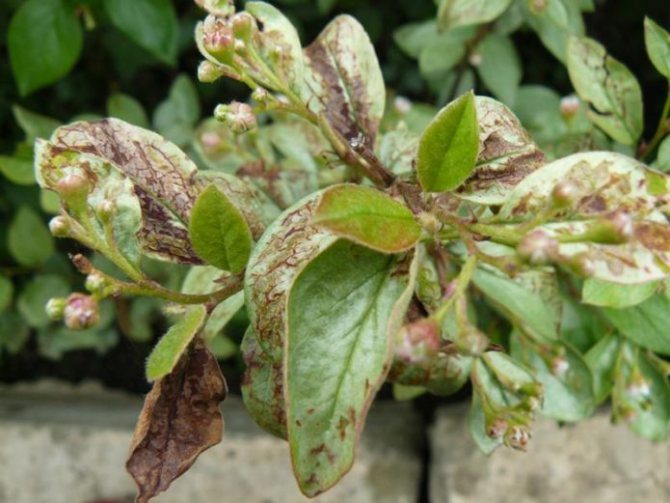
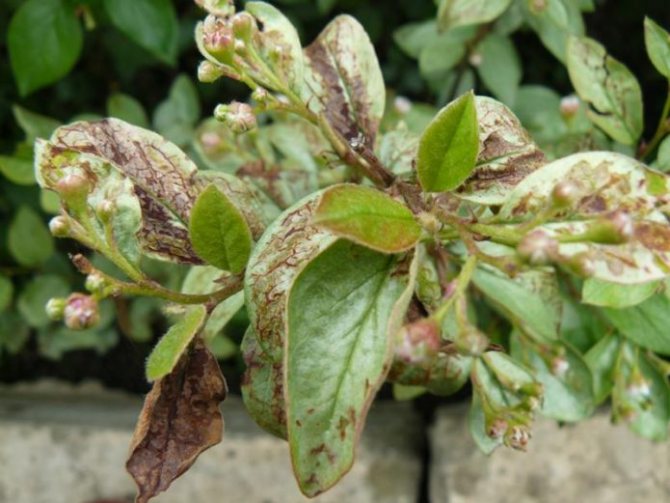
Fusarium wilting develops at a very fast pace, on the aerial part of the plant it manifests itself only when the roots have already been irreversibly damaged
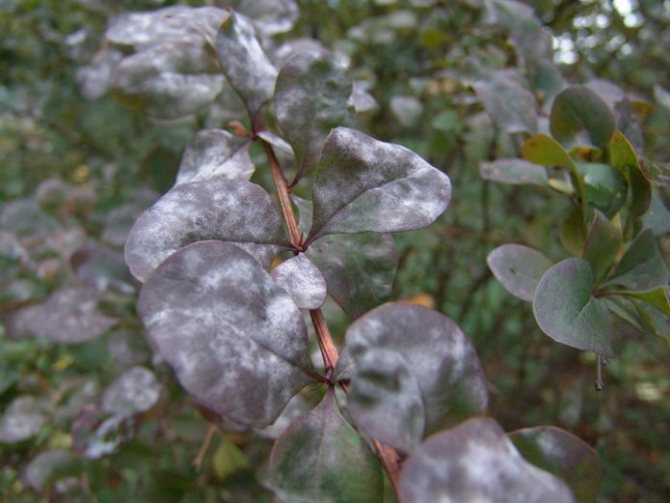
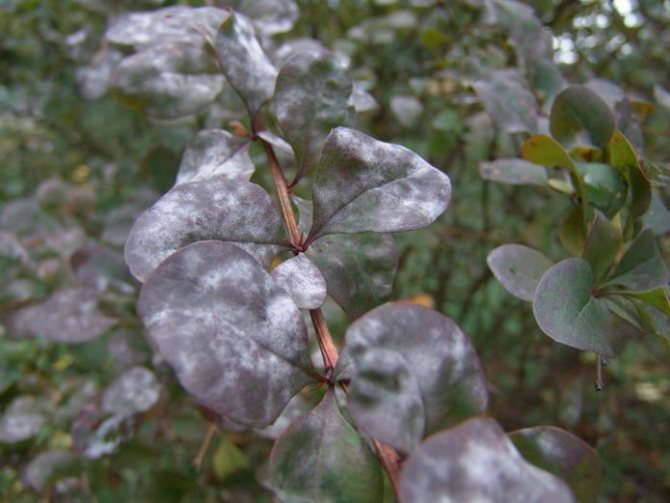
Powdery mildew seems to be a harmless bloom that can be easily erased, but in fact it is a serious disease.
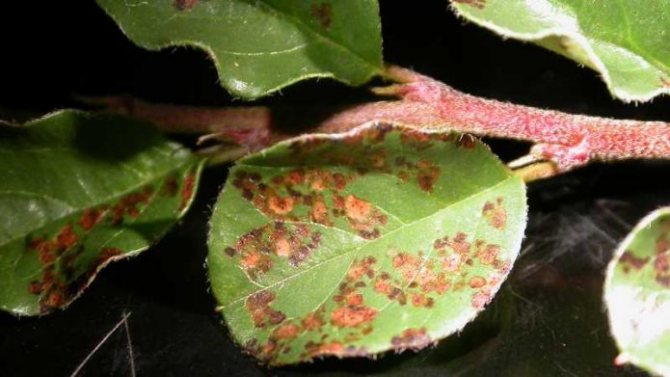
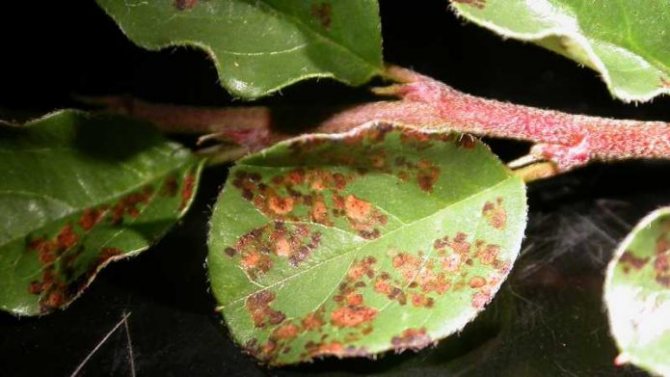
Rust-affected tissues gradually die off, the leaves fall off
Of the pests, the most dangerous are aphids and scale insects. They feed on plant sap. To scare away insects, you can plant any plants with a characteristic pungent aroma next to the hedge.


Aphids are almost an omnivorous garden pest, they attack plants with whole colonies, preferring to settle on the tops of shoots, young leaves, buds
If prevention does not help, aphids are destroyed using any general-purpose insecticides (Tanrek, Mospilan, Iskra-Bio). Fufanon, Aktara are effective against the scabbard.
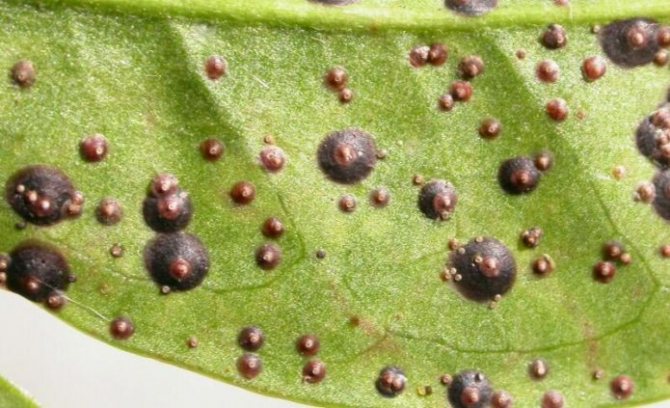
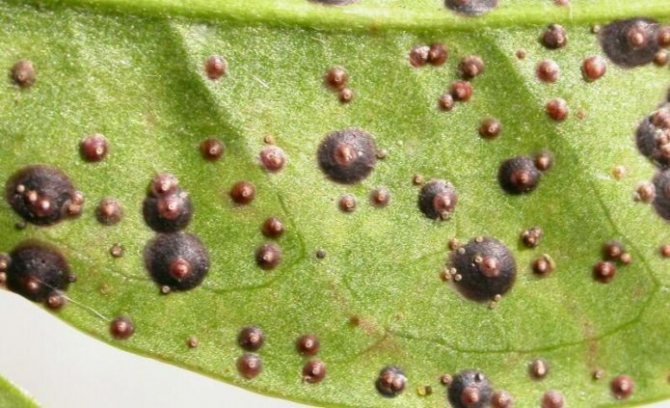
Folk remedies against scale insects are ineffective – the pest is reliably protected by the “wax” shell
Pruning is carried out starting from 3-4 years after planting (the bushes should grow up to 50-60 cm) 2-4 times per season according to the following principles:
- annually at the beginning of spring, sanitary pruning is required; in the fall, the bushes are not touched;
- the cotoneaster is cut mainly from the top, activating the growth process of side shoots;
- the branches are shortened by a maximum of a third so that the height of the bush increases by 5–8 cm annually;
- to form a simple configuration of a fence (rectangle, trapezoid, triangle), tensioned ropes are used, for more complex contours – templates from wooden slats, bars.
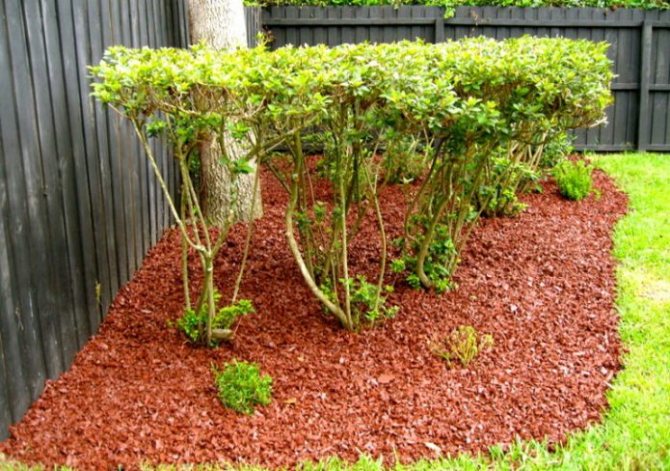
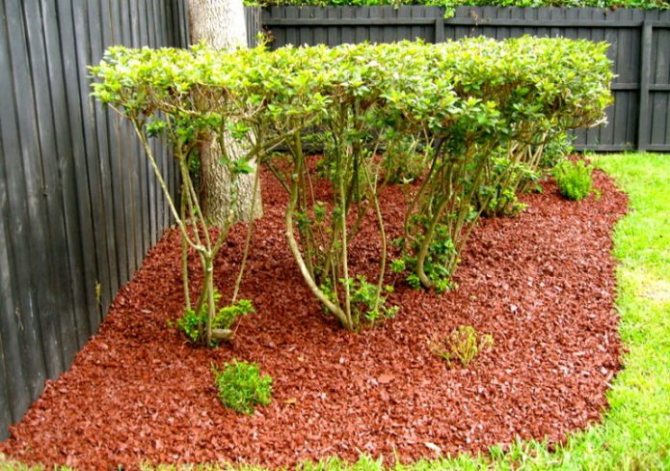
Shiny cotoneaster is trimmed mainly from above, stimulating branching of lateral shoots
For the formation of a hedge, a brilliant cotoneaster is one of the best options. The plant adapts to almost any conditions, easily tolerates pruning, the gardener spends a minimum of time and effort on caring for it. The only objective drawback is that the “fence” is susceptible to fungal diseases, but regular prophylaxis will prevent infection.
